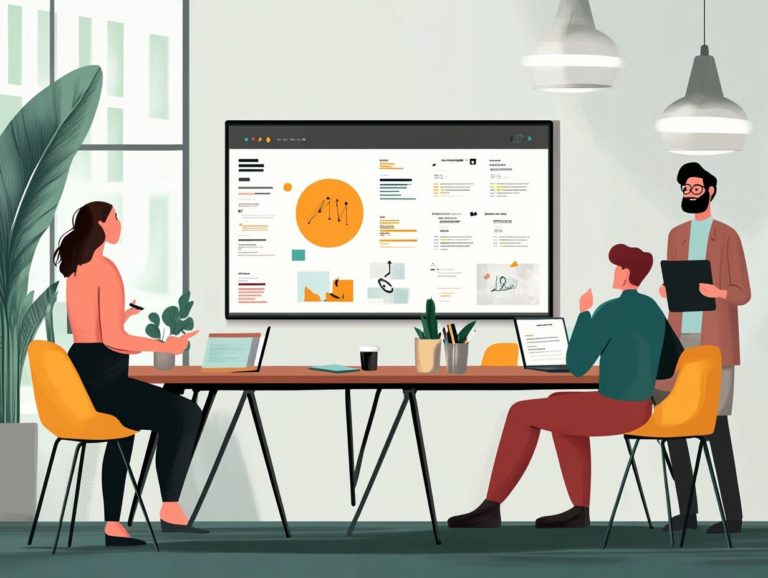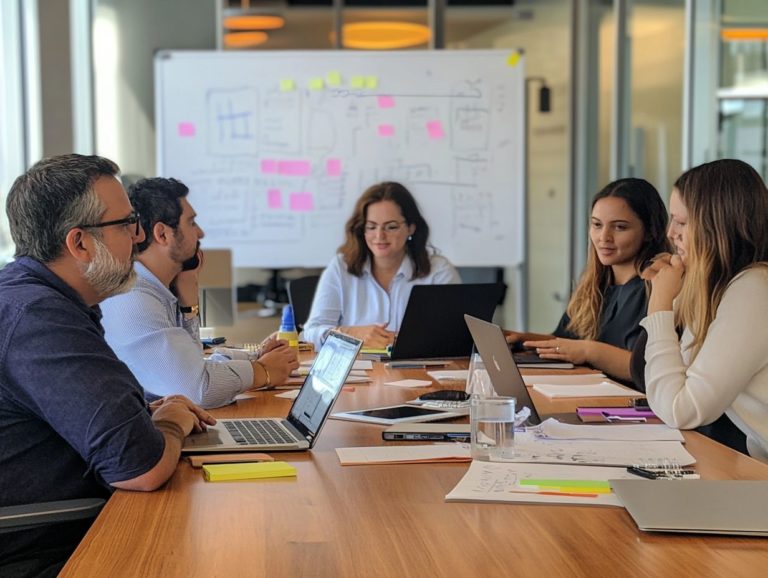Using Gamification in Employee Onboarding
In today s competitive job market, effective employee onboarding is essential for retention and overall organizational success. A well-structured onboarding process helps new hires settle in smoothly, helping them feel involved and productive from day one.
Consider gamification as a transformative approach that turns the onboarding experience into an interactive and enjoyable journey. This article delves into the importance of onboarding, defines gamification, and highlights how incorporating game mechanics can elevate the onboarding process.
You ll discover practical strategies for implementation along with real-world examples that showcase the power of gamification in creating a thriving workplace. Let s explore how you can turn onboarding into an exciting adventure for your new employees!
Contents
- Key Takeaways:
- The Importance of Employee Onboarding
- What is Gamification?
- How Gamification Can Enhance Employee Onboarding
- Implementing Gamification in Onboarding
- Measuring the Success of Gamification in Onboarding
- Examples of Successful Gamification in Onboarding
- Frequently Asked Questions
- What is gamification and how can it be used in employee onboarding?
- How can gamification improve the onboarding experience for employees?
- What are some examples of gamification in employee onboarding?
- Can gamification be incorporated into traditional onboarding methods?
- How can gamification help with employee retention?
- Is gamification suitable for all types of companies and industries?
Key Takeaways:
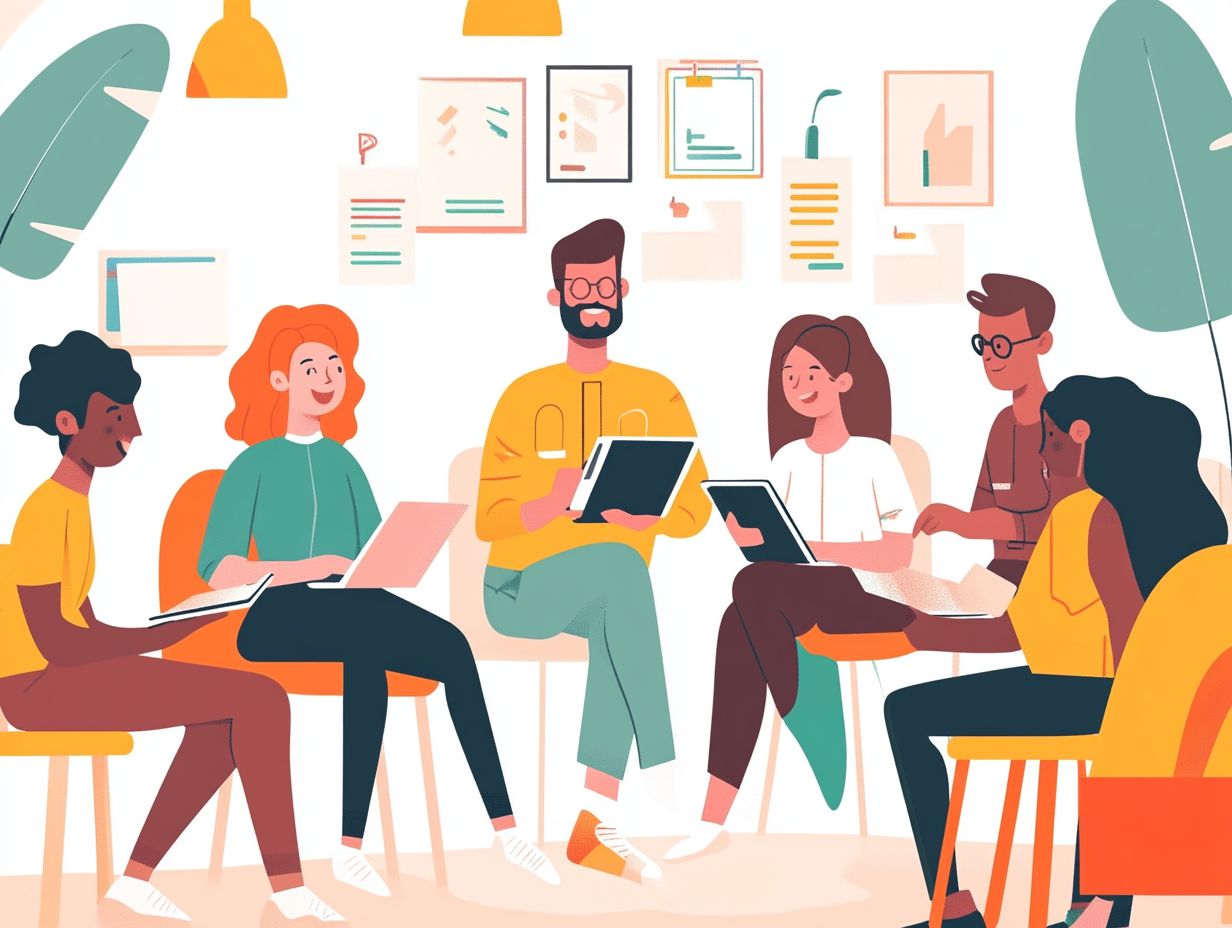
- Gamification significantly boosts the employee onboarding process by increasing engagement and retention rates.
- Implementing gamification in onboarding requires careful planning, using specific techniques and metrics to measure success.
- Real-world examples of successful gamification in onboarding provide useful insights and best practices for your onboarding process.
The Importance of Employee Onboarding
Employee onboarding is an essential process that lays the groundwork for new hires within an organization. It fosters their integration into the company culture and ensures a smooth transition into their roles.
When done effectively, onboarding boosts employee satisfaction and significantly impacts productivity and overall engagement. By adopting strategic onboarding solutions, you can enhance the onboarding experience, which results in higher retention rates and a more engaged workforce.
Why Onboarding Matters for Employee Retention and Success
Onboarding is crucial for employee retention and success, as it provides new hires with the tools and knowledge they need to navigate their roles effectively.
A well-structured onboarding process elevates engagement levels and helps new employees feel an immediate connection to their teams and the organization. Research shows robust onboarding boosts employee retention by up to 82%, cutting down on recruitment costs and mitigating lost productivity.
Take companies like Google and Zappos, for instance; they ve crafted comprehensive onboarding programs that emphasize mentorship and social integration, leading to higher employee satisfaction scores and greater loyalty. By enhancing the onboarding experience, you can cultivate a culture of belonging, a vital ingredient for long-term success.
What is Gamification?
Gamification means using game mechanics and principles in non-game environments, like employee onboarding and training, to boost user engagement and motivation.
By harnessing elements such as reward systems, leaderboards, and progress bars, you can create an immersive experience that encourages participation and cultivates a competitive spirit among new hires.
This approach transforms routine tasks into dynamic challenges, making the learning process both enjoyable and effective.
Defining Gamification and Its Benefits
Gamification weaves game-like elements into activities to elevate the user experience, making everything more engaging and enjoyable.
By incorporating features like points, badges, and leaderboards, you can transform mundane tasks into interactive experiences that truly capture attention and maintain interest. You ll likely find yourself more motivated to participate actively, boosting user retention.
One standout advantage of gamification is its ability to cultivate a sense of achievement and competition, enhancing engagement strategies across various business landscapes. For example, businesses can introduce progress tracking and rewards systems that inspire you to complete tasks and reach milestones, ultimately fostering loyalty and satisfaction.
In conclusion, gamification can revolutionize your onboarding process, making it more engaging and effective. Reflect on how you can implement these strategies in your organization and create a welcoming environment for your new employees!
How Gamification Can Enhance Employee Onboarding

Gamification has the power to enhance your employee onboarding experience by transforming traditional training programs into exciting, game-like environments. This method boosts engagement and improves task completion rates.
By adding challenge elements and progress tracking, new hires can fully immerse themselves in their onboarding journey, making it a more enjoyable and effective process.
Specific Ways Gamification Can Improve the Onboarding Process
Gamification can truly transform your onboarding experience in several impactful ways. By incorporating elements like leaderboards, badges, and a rewards system, you create an engaging atmosphere that inspires new hires.
These elements motivate you to delve into the onboarding material and create a sense of friendly competition among peers. Leaderboards help organizations track individual progress, encouraging you to exceed your limits. Badges serve as visual markers of your achievements, making your accomplishments feel real and fostering a sense of pride.
Imagine a rewards system that incentivizes your participation. For each completed module or task, you could earn points that you can exchange for exciting rewards like gift cards or extra time off. These strategies collectively enhance engagement and satisfaction, leading to improved retention rates and a stronger workplace culture.
Implementing Gamification in Onboarding
Implementing gamification in onboarding requires a carefully planned method that includes targeted strategies, such as using checklists and progress bars to guide new hires through their training.
By clearly outlining onboarding strategies and leveraging game mechanics, you can create an engaging environment that promotes skills development and improves the overall onboarding experience.
Steps and Strategies for Incorporating Gamification
To effectively integrate gamification into your onboarding process, start by focusing on user engagement and task completion.
Begin by creating engaging content that resonates with new hires ensuring it is not only informative but also interactive and fun. Incorporate elements like quizzes, challenges, and collaborative tasks to foster a dynamic learning environment.
A rewards system is essential; it offers motivating incentives for reaching milestones, whether through badges, points, or even small prizes.
Embed constant feedback opportunities within the onboarding framework, allowing new employees to track their progress and identify areas for improvement.
Aligning these gamification strategies with your broader onboarding solutions is crucial for creating a cohesive experience that enhances learning and boosts retention.
Measuring the Success of Gamification in Onboarding
Measuring the success of gamification in your onboarding process is vital for understanding its impact on retention and employee satisfaction. By tracking specific onboarding metrics, you can assess engagement levels and identify areas needing improvement.
This insight enables you to refine the experience and create a more effective and enjoyable onboarding journey.
Are you ready to enhance your onboarding?
Key Metrics to Track and Analyze
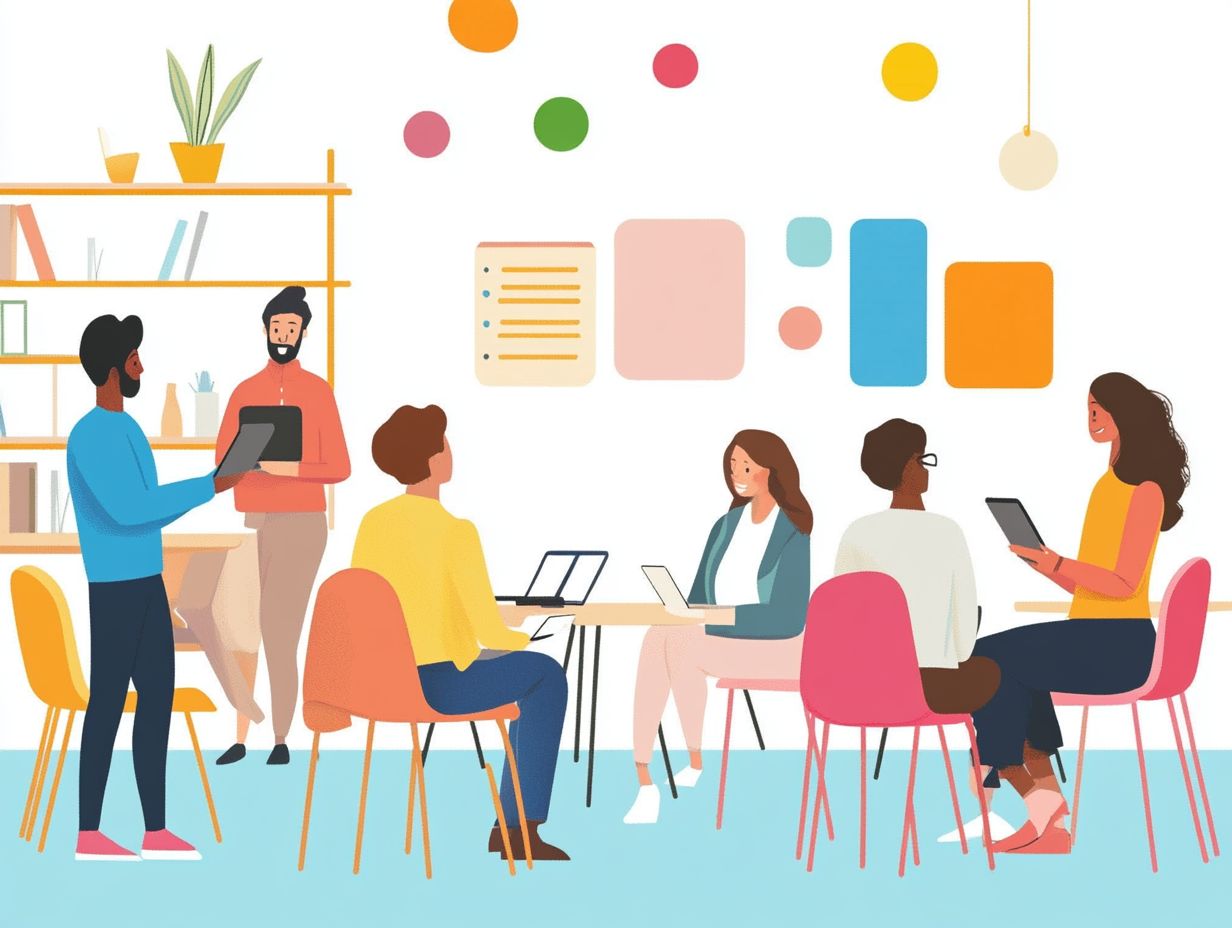
Key metrics that you should track and analyze during the onboarding process include user experience ratings, task completion rates, and feedback opportunities provided to new hires.
These metrics are essential for assessing how effectively your organization integrates new employees. They also help in understanding the company s culture and systems.
User experience ratings can shed light on how intuitive and engaging your onboarding platform is. This can significantly influence new hires’ confidence and productivity.
Task completion rates will help you gauge whether new employees are grasping the necessary information and adapting to their roles efficiently.
By gathering feedback opportunities, you enable new hires to voice their concerns and gain valuable insights for continuous improvement.
Implement surveys and engagement analytics to collect this data. This enables you to refine your onboarding processes and ultimately enhance employee retention.
Examples of Successful Gamification in Onboarding
You ll find a wealth of examples where organizations have successfully integrated gamification into their onboarding processes. These innovative programs not only captivate new hires but also enhance engagement and significantly elevate the outcomes of employee training.
Real-World Case Studies and Best Practices
Real-world case studies provide invaluable insights into best practices for gamification in onboarding, highlighting measurable improvements in employee engagement and retention.
By examining various organizations, you can clearly see how these strategies enhance the onboarding experience and cultivate a culture of continuous learning.
Imagine a tech startup that transformed its onboarding with a points-based system. In this system, new hires earn points for completing tasks and collaborating with colleagues. This approach made the learning process enjoyable and significantly shortened the time it took for new employees to reach peak productivity.
Incorporating elements like leaderboards and interactive quizzes allows you to cater to different learning styles and foster healthy competition within teams. Such adaptations illustrate the versatility of gamification, proving that it can be effectively applied across various sectors.
Frequently Asked Questions
What is gamification and how can it be used in employee onboarding?
Gamification is the use of game elements, such as points, challenges, and rewards, in a non-game context. In employee onboarding, it makes the process more engaging and interactive for new hires.
How can gamification improve the onboarding experience for employees?
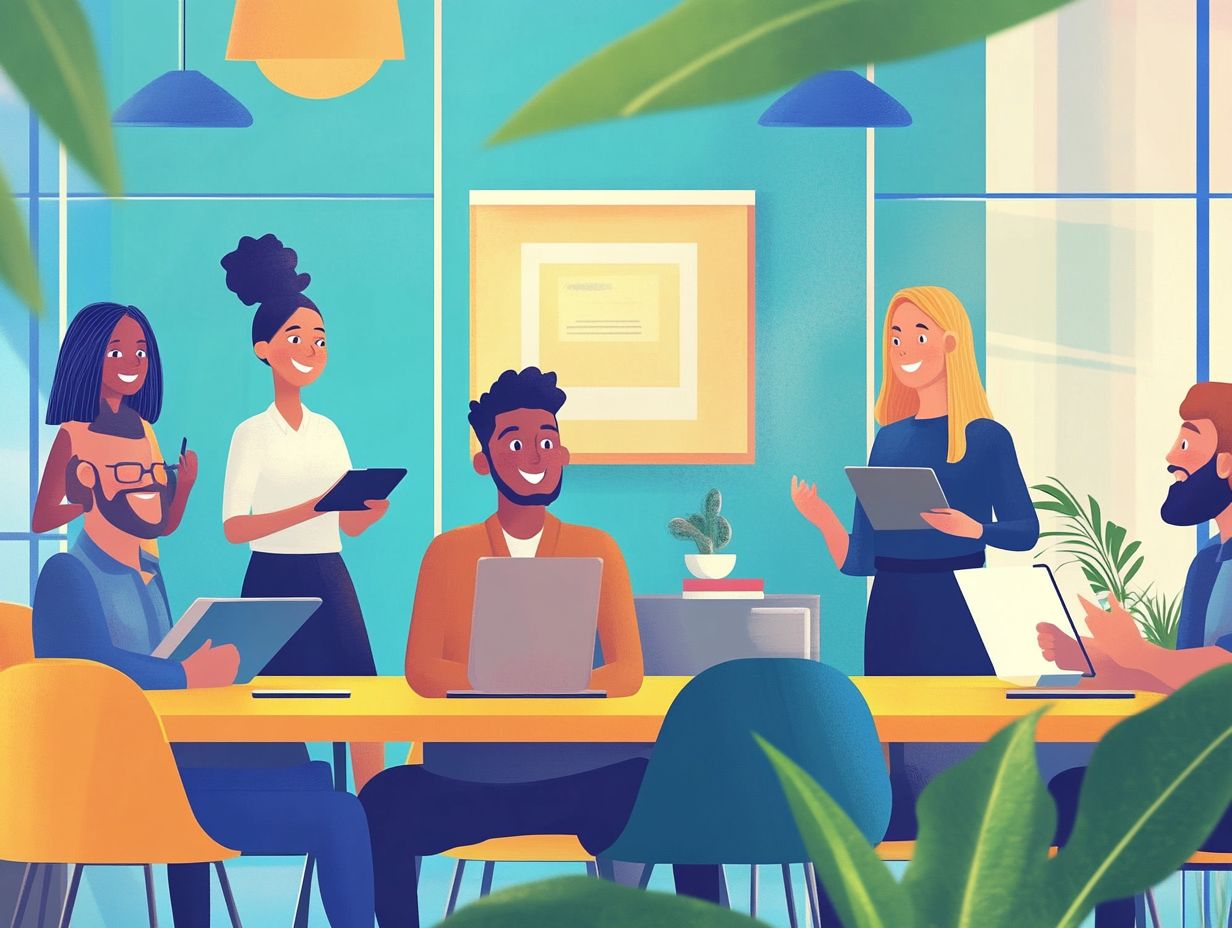
Gamification makes the onboarding process enjoyable and less overwhelming for new employees. It helps them retain information better and feel more connected to the company culture.
What are some examples of gamification in employee onboarding?
Examples of gamification in employee onboarding include using online quizzes, virtual scavenger hunts, and interactive training modules. To enhance this process, consider using onboarding software effectively. These activities can help new employees learn about company policies and procedures in a fun and engaging way.
Can gamification be incorporated into traditional onboarding methods?
Yes, gamification can be incorporated into traditional onboarding methods such as in-person training and orientation sessions. For example, an interactive presentation or team-building activity can introduce new hires to company values and goals.
How can gamification help with employee retention?
By making the onboarding process more enjoyable and engaging, gamification helps new employees feel more connected to the company and its culture. This can increase job satisfaction and ultimately lead to higher employee retention rates.
Is gamification suitable for all types of companies and industries?
Gamification could be a game-changer for your company! It can be used in various industries and for companies of all sizes. It can be tailored to meet the unique needs of each organization.
Before adding gamification, consider the company culture and employee preferences. This ensures a smooth integration into the onboarding process.

